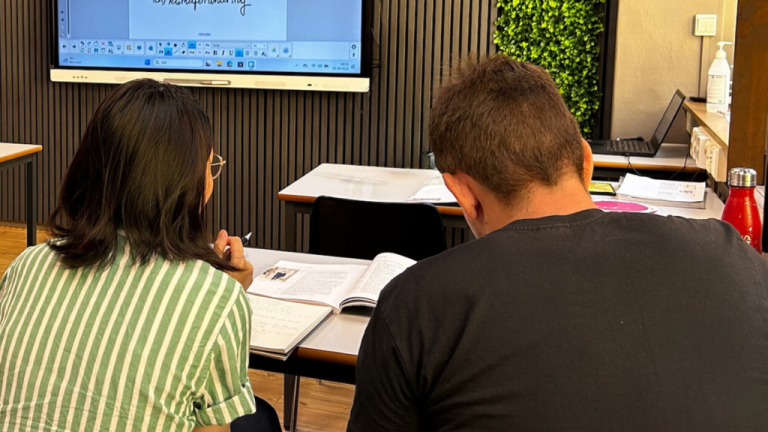Norwegian Weak and Strong Verbs
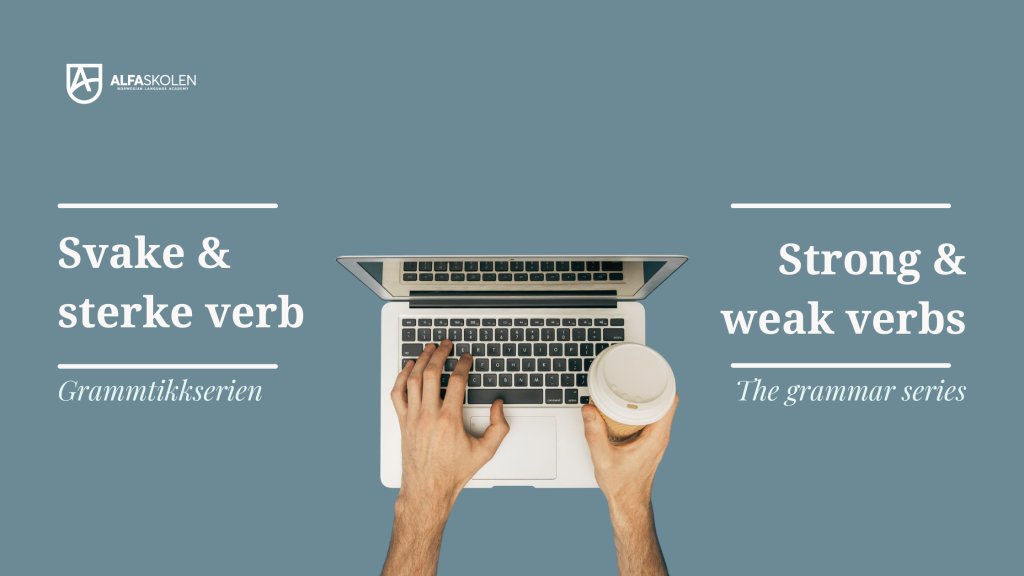
When we speak or write Norwegian, we use different types of verbs. Some are weak, others are strong. Maybe you’ve even heard these words before and wondered what they mean. Whether a verb is weak or strong is important for how the verb is conjugated. This is essential to know to master Norwegian grammar and therefore one of the first things you learn in Norwegian courses. Being able to distinguish between weak and strong verbs will also make it much easier to conjugate verbs when learning new verb forms. So what’s the difference between weak and strong verbs? And how do we conjugate Norwegian verbs? These are the questions we will answer in today’s post.
To make it easier to follow along in the text, we will mark weak verbs in green and strong verbs in blue.
Weak verbs
To determine whether a verb is weak or strong, we must look at the past tense form. The past tense is a form used for an action that occurred in the past and is also completed. I går laget jeg en god middag (Yesterday I made a good dinner) is an example of a sentence with a verb in the past tense. But why is this a weak verb? Weak verbs are verbs that receive an ending in the past tense, and we can see this by comparing the past tense form with the infinitive form:

Here we can see that the verb å lage (to make) gets -t in the past tense. This means that it is a weak verb. Let’s look at another example. Før likte jeg å spille fotball, men i dag foretrekker jeg håndball (Before, I liked playing football, but today I prefer handball). The verb å like (to like) in the past tense gets the ending -te.

Even though å lage (to make) and å like (to like) don’t have the same ending in the past tense, both verbs will be classified as weak verbs. This is because weak verbs can have four different endings in the past tense. Which verb gets which ending, we will look at more closely later in the text. It’s important to have a good understanding of this when learning about Norwegian verbs, and it will also help you conjugate verbs correctly in different situations.
Strong verbs
To learn about strong verbs, we must again look at the past tense form. In the sentence I går drakk jeg en kaffe med naboen (Yesterday, I drank a coffee with the neighbor), we find the strong verb å drikke (to drink). Can you see why å drikke (to drink) is classified as a strong verb? There are two characteristics of strong verbs. The first characteristic is that strong verbs do not receive an ending in the past tense. Unlike å jobbe (to work), which gets -et and å like (to like), which gets -te, å drikke (to drink) does not receive an ending. Often (although not always), the past tense form is shorter than the infinitive form:
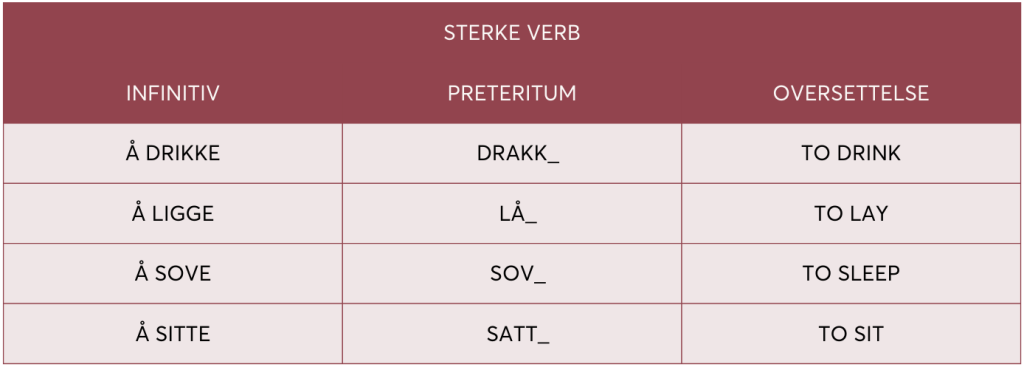
The second characteristic is vowel change. Many strong verbs undergo a vowel change in the past tense. Å drikke (To drink) has i in the infinitive form, but a in the past tense. But it’s important to note that this doesn’t apply to all verbs. In the table above, we have the strong verb å sove (to sleep), which lacks an ending in the past tense, but doesn’t change its vowel. Here are other examples of strong verbs that don’t undergo vowel changes in the past tense:

Unlike weak verbs, strong verbs are more irregular, and it’s not always easy to determine how to conjugate a strong verb. That’s why our students learn about strong verbs already at A1 level. Our teachers always make sure to conjugate the most challenging verbs on the board, so that all our students feel confident using strong verbs and can use them in a variety of situations. Having this extra focus on strong verbs early in the learning process helps our students build a solid foundation in Norwegian grammar.
Four different endings
Now that we understand what sets weak and strong verbs apart, we can take a closer look at the four different endings for weak verbs. What’s nice about weak verbs is that they are usually regular, and therefore much easier to conjugate than strong verbs.
Let’s start with the ending -et. Verbs that have two consonants before e in the infinitive form receive the ending -et. For example, the verb å jobbe (to work) has two b’s before e and therefore gets the ending -et. The verb å danse (to dance) has n and s before e, and also receives the ending -et. Other verbs that get the -et ending are verbs ending in -de, such as å lade (to charge), which in the past tense is ladet. Verbs ending in -ge, such as å lage (to make), can either get the ending -et or -de. Here is an overview of other verbs that receive the -et ending:
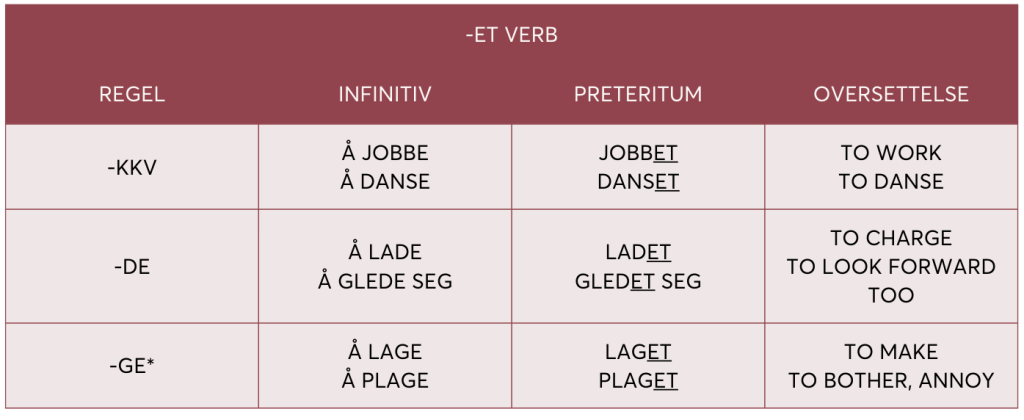
Verbs that have only one consonant before e in the infinitive form receive the ending -te. Such a verb is å spise (to eat), which in the past tense is spiste (ate). Let’s formulate it differently: Verbs with the ending CCV (consonant, consonant, vowel) get the ending -et, and verbs with the ending VCV (vowel, consonant, vowel) get the ending -te. But it’s not just these verbs that get the -te ending. Weak verbs with the endings -mme, for example å drømme (to dream), and -nge, for example å ringe (to call, ring), also get the -te ending in the past tense. Here is an overview of more verbs with the -te ending:
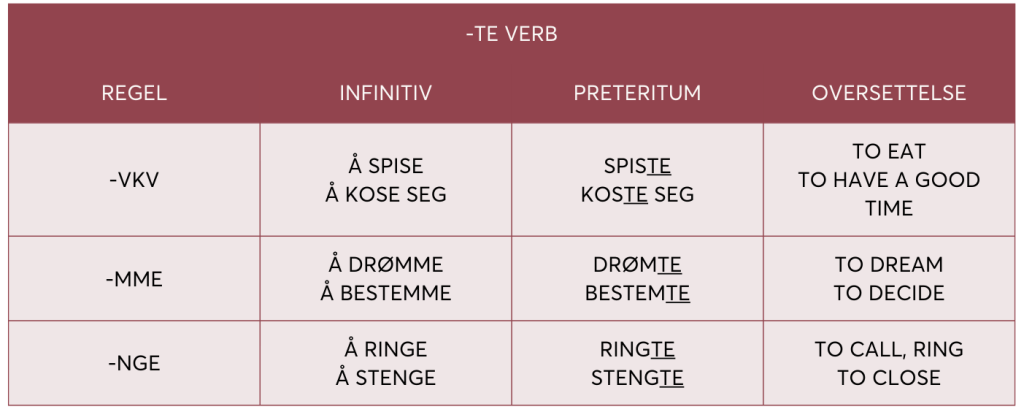
The third ending is -de. Luckily, this one is simple: Verbs ending in -ve, for example å leve (to live), and verbs ending in -eie, for example å leie (to rent), get the ending -de. As mentioned earlier, verbs ending in -ge, such as å lage (to make), can receive both the ending -et and -de in the past tense. So, here you can choose your favorite! Here is an overview of verbs with the -de ending:
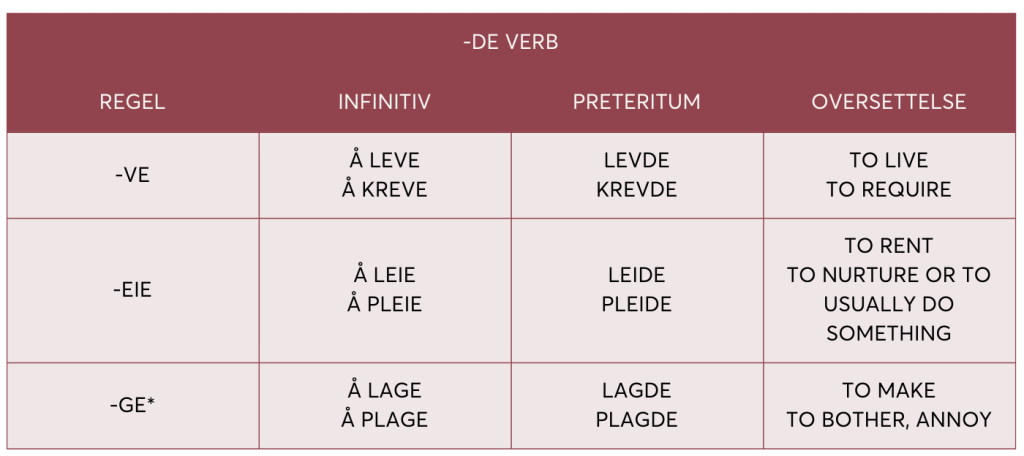
Last but not least, the -dde ending (D.D.E. is also a very good Norwegian band, recommend!). Verbs that do not end in -e in the infinitive form, receive -dde in the past tense. Neither å ha (to have) nor å bo (to live) ends in -e, and therefore they get the -dde ending in the past tense. Here is an overview of other -dde verbs:

It might be a lot to remember, but practice makes perfect! Like with everything else in life, the key to mastering Norwegian grammar and verb forms is to practice regularly. The more you practice, the more it will become a natural part of your language skills. Don’t be afraid to make mistakes – it’s through mistakes that we learn and improve. Take the time to repeat and practice verb conjugations, whether it’s through written exercises, conversations with others, or by reading and listening to Norwegian. And if you still find Norwegian grammar challenging, it might be a good idea to consider taking a grammar course where you can focus on both Norwegian verbs and other grammatical topics.
Study tips
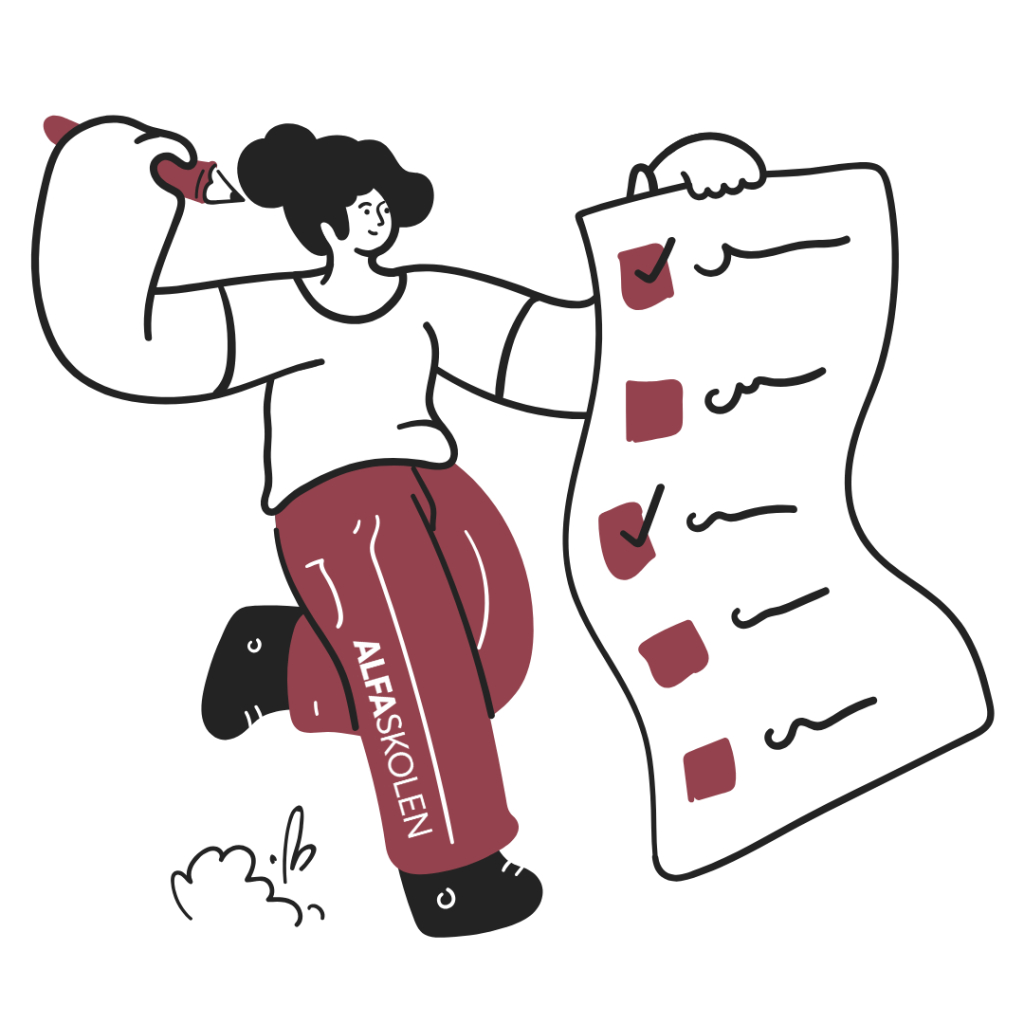
The most important thing when learning a new language is to use what you have learned. An effective way to learn Norwegian verbs and their conjugations is to create flashcards with verbs on one side and their conjugations on the other. With some repetition, you will gradually be able to memorize the different forms. It’s also useful to read and listen to Norwegian as much as possible to expose yourself to verbs in various contexts. Participating in conversations in Norwegian, either with a language partner or in a language group, will also help improve your understanding of how verbs are conjugated in natural conversation. For this, language cafés are great! Additionally, you can use resources such as grammar exercises and verb tables online or in textbooks to strengthen your verb skills.
Thank you for your attention, and best of luck with your Norwegian!
Written by Iga, Norwegian teacher at Alfaskolen.
Tags:
